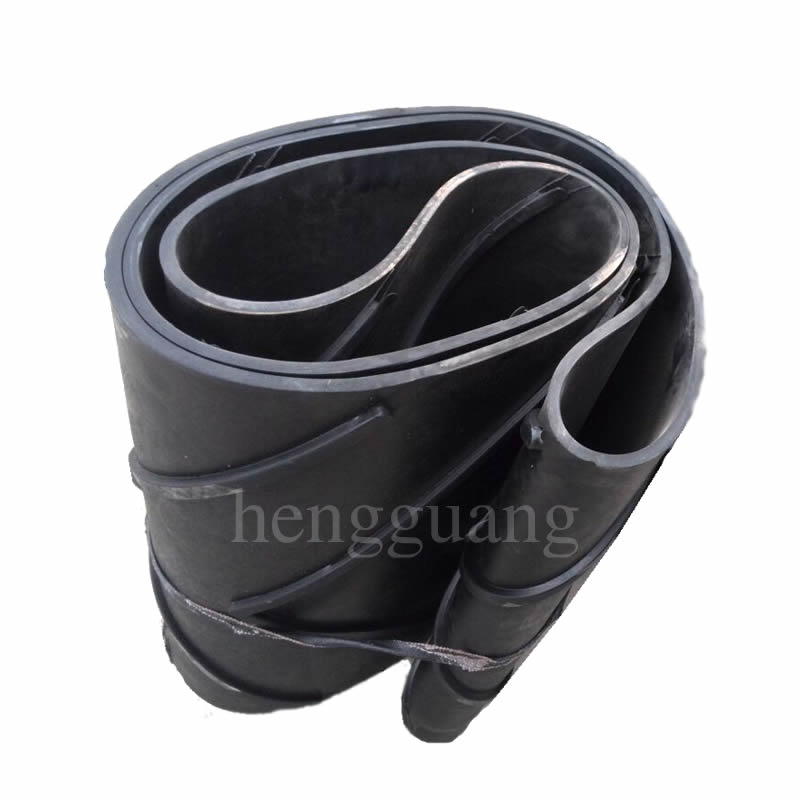May. 13, 2020
1. The diameter of the reversing roller is small, and the bending stress borne by the conveyor belt is large.
2. The conveyor belt vulcanized joints are of poor quality, especially those that have been vulcanized for more than two times. The strength of the joints will decrease obviously, or the canvas layer will be cut off when gluing, or the strength will be reduced here due to grinding leakage.
3. For the reversible conveyor, it can only be in one direction when lapping up and down, so it is easy to be scratched by the sharp corners of the equipment such as the belt sweeper and the unloading device.
4. The working cycle of the conveyor is short, the starting frequency is frequent, and the instantaneous tension force is large.
1. The gap between the lining board of the guide groove and the belt is not suitable, resulting in abnormal wear and tear, or a foreign body is embedded in the gap, resulting in abnormal wear and tear or scratch.
2. The material flow rate at the guide trough is inconsistent with the speed of the conveyor belt.
3. The supporting roller is damaged, resulting in abnormal wear and tear or scratch of the rubber belt.
4. The illegal operation, welding slag scald during maintenance.
5. Sweeper scratches.
6. If the belt slips, it will also cause abnormal wear and tear of the belt

Ring Conveyor Belt
1. Vibration impact causes the fastener to lose and fall off, resulting in falling coal pipe lining board, material guide board, etc.
2. The foreign body is mixed into the material, which is hard and angular, and the coal pipe is blocked and squeezed to death.
3. The supporting roller was defective, and the supporting roller frame caused scratches.
4. The conveyor belt is hung by the rack after it is out of alignment.
5. The sweeper is involved in the roller (return sweeper), the bolt is loose, and there is the precursor of spring.
1. Increase the density of idlers at the lowest depressions in the roadway where belt conveyors are located, that is, add two idlers between each idler to reduce the span of idlers here, and the conveyor belt transporting coal and gangue through the depressions will no longer drop into the idlers overhead.
2. Weld several reinforcing brackets on the supporting roller frame, and use repair welding to increase the strength of the supporting roller frame at each welding joint; A hook ring is added above the slot of the idler to fix the idler so that the idler will not be hit down.
3. The unloading port is equipped with a net type material guide net of 3 ~ 5M. After the coal gangue falls down, it will be blocked by the net and move forward along the conveyor belt, so as not to get stuck or fall between the idler frame and the conveyor belt in the return section.
4, strengthen the daily maintenance and maintenance of the conveyor safety protection device, to ensure that various protection devices are sensitive and reliable so that the belt conveyor will not be running in the state of no protection for a long time.
Through the above rectification, the damage rate of the conveyor belt was reduced from 56.4% to 13.1%, which greatly improved transportation efficiency. This is the advice of building material belt supplier for daily maintenance applications. If there are any problems with the use of the belt, I hope you can communicate with me in time so as to minimize the loss.